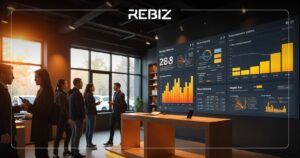How are Customers Seen in Marketing?
On the surface, business marketing seems to focus on appearances and impressions. Many consumers think of branding —how the business looks to its audience or what efforts they observe over media platforms and in-store. Business owners, however, know that there is so much more to consider. Marketing involves communication and developing relationships with a customer base. That’s the reality of both gaining new customers and retaining existing ones.
What is Customer Journey?
The customer journey is the path that describes the relationship between a customer and a business from their first connection onward. This path starts at the first point that the customer has interacted with the business, whether that be physically entering a store or viewing a post from the business on social media. The path goes on to follow further interactions including browsing behaviors, purchases, and direct feedback when possible.
Why is Customer Journey Important?
Mapping out the customer journey shows how a customer-business relationship developed over time. Understanding the nature of the relationship and how it developed is essential for customer retention. Certain behaviors over time enlighten business owners as to why their customers have maintained the relationship, or why there could be a danger of it ending.
What Makes Up Customer Journey?
The information collected in journey mapping provides the opportunity to gain a full understanding of the customer. Learning about their background, interests, habits, and communication supply the business owner with the best understanding for meeting the customer’s needs and setting expectations —a vital part of maintaining their loyalty. The following elements are fundamental to the customer journey:
Demographics:
Demographic information gives an idea of the customer’s identity, whether it be the intentional seeker, window shopper, or online trend follower. We can figure out how a person fits into the customer base with information on how they came to the business and how they behaved upon the first contact. Are they a neighbor who’s using the store visit to kill free time, or are they genuinely intrigued by what’s being offered? Did they search for a product online and find a link to this company? Determining how the customer relationship was initiated allows us to see the potential for future interactions.
Engagement:
Tracking engagement shows how and when the customer communicates. Engagement allows us to assign the most effective way to reach the customer. First, the avenue of communication displays the customer’s resources and comfort. Are they comfortable with online correspondence, or do they need to speak with someone directly? Next, the frequency of interaction highlights their level of interest, letting a business know how much communication they prefer. Do they visit weekly or only when absolutely necessary? The timing of business contact also alludes to the nature of the customer’s interactions.
Motivation:
The nature of a customer’s interactions reflects their motivations. Insight into the customer’s headspace strengthens our ability to anticipate the needs that may arise in the future. Under what circumstances are they reaching out to the business? Do they only interact upon purchases? Or are they trying to get something fixed from a previous purchase? Tracking the nature of each interaction reveals patterns in the customer-business relationship which suggest how the customer perceives the business and where their loyalty, or lack of it, comes from.
Custom Plan:
Upon understanding preferences within the customer relationship, a business can act in the customer’s interest. Customized marketing plans encourage trust and loyalty. When a business respects the way a customer approaches it, the customer can navigate with more certainty. We can analyze the customer’s demographics, engagement, and motivation to create a plan that drives them to keep coming back. For example, customers that exclusively engage online fit into a plan that only connects through digital media. Or customers who only reach out to solve issues might fall under a plan with messages focused on improvement and updating products.
The Result
All of this data provides a full, descriptive report on the customer. Customer retention depends on a business’s ability to appeal to its customer’s needs and preferences. Tools like ReBiz’s Retento, for marketing campaign management, tracks essential customer data for the specific purpose of customer retention and business coaching. While expansion is at the forefront of many businesses, maintaining a loyal customer base should always be a priority.



